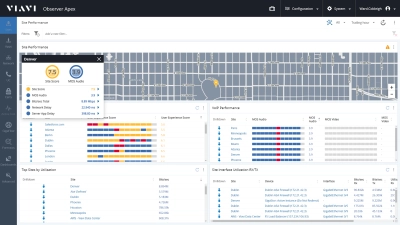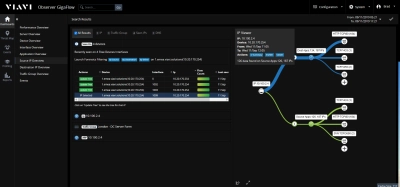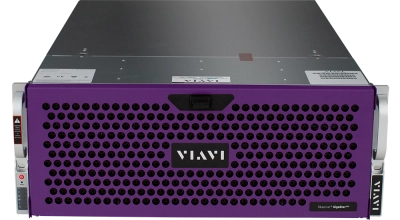Manufacturing
Use Cases for Manufacturing of both durable and non-durable goods
Our global economy depends on manufacturing. According to the World Trade Organization, 80% of interregional trade is in goods, and only 20% is in services. And most services depend on manufactured goods for operations and growth. Manufacturing delivers us durable goods like automobiles, computer hardware, and items we find in daily use as well as non-durable like beverages, food and more.
IT is considered a competitive advantage in manufacturing, from the production floor to the back office, and throughout the supply chain. Manufacturing is a very customer-centric environment and spend on technology is pragmatic and measured based on evaluating benefits to the business with ongoing improvements in delivering value to customers.
And as we’ve seen during the pandemic, market changes can dramatically impact manufacturing supply lines when demands change, creating potential overages or unmet demand that equates to lost sales, profit, customers, and even market share. For example, in automotive or technology production, manufacturers often have agreements to supply parts to dealers within a certain number of hours or days. If the network is down they can’t receive the order, process or dispatch the parts to meet contractual obligations.
And with the pandemic’s global impact, the need to be even more agile surfaced. Supply chains are more volatile because of geographic responses, personnel have been sent home putting demands on IT to ensure access, integrity and security of applications and systems. These changes have forced many manufacturers to re-evaluate and accelerate cloud initiatives that support the agility needed to remain relevant, profitable and competitive in a global economy.
Avoiding Downtime
In manufacturing, downtime is measured in lost productivity and lost sales. When systems are down or even slow, production is impacted or stops. Many companies are producing goods to meet orders and shipping commitments. Downtime means productivity losses than can reach upwards of 20%, missed deliveries and can even trigger significant agreement penalties.
It is critical to acknowledge that every network has data loss or network delay. What’s challenging for many is having the ability to identify these losses and delays, understand the impact and who is affected.
The VIAVI Observer platform provides a single, patent-pending End User Experience score to quickly identify what applications and users are being affect by network performance issues. Unlike many systems that provide dozens of confusing and often conflicting KPIs that require deeper, time consuming analysis, the single End-User Experience Score immediately shows whether the problem originates from an end-user perspective. Network operations personnel can use the insight to efficiently pinpoint and resolve issues.
Using network monitoring tools to ensure that applications and infrastructure are performing at peak levels is mission critical to keep access to design, purchase, production, logistics and billing systems running smoothly. The Observer platform is engineered to support business needs with actionable data and ensure that production impacts are minimal.
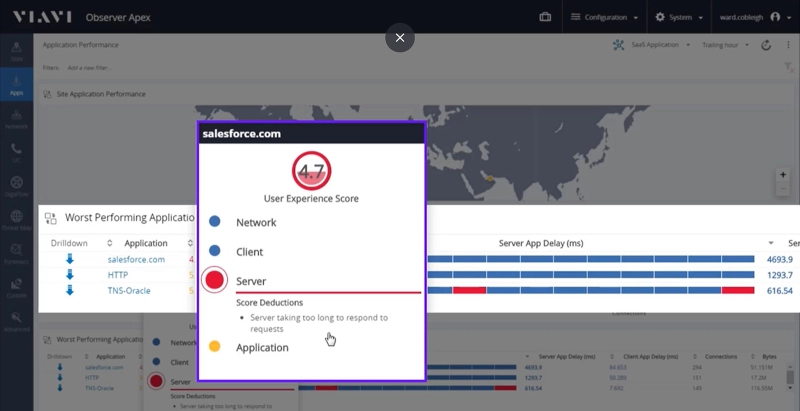
Securing Intellectual Property and Processes
Manufacturing organizations typically don’t have as much personal information to protect as other industries, but safeguarding intellectual property is paramount. For example, if a food manufacturer had a breach at one of their plants, the last thing they want to risk are proprietary food recipes as they are considered the crown jewels. It should go without saying but manufacturers in all fields are just as vulnerable to the growing cybersecurity threats and breaches as organizations in other industries.
Recent work-from-home changes impact manufacturers, even though production and logistics staff have adapted with safety precautions to remain in normal environments, office-based staff have been required to work remotely. This has added pressure to the IT teams to ensure security processes, systems and policies are reviewed, updated and enforced to support safe working.
We have used Observer for a few years now - it provides unparalleled visibility of our networks, excellent forensic analysis tools and would be impossible for us to live without.
Head of IT in the Manufacturing Industry
The ability to identify unusual traffic and behavior in network and application access is one of the strengths of Observer. In addition, the ability to find clues (data) that indicate a breach are critical to containment and can be used to provide the documentation requested by business leaders, boards of directors and even legal teams.
Empowering IT Talent
Many manufacturers are also facing a staffing challenge. Recruiting and retaining talented IT network and cybersecurity staff is a global issue. The dashboarding capabilities enable issues to be identified, prioritized and routed by first level service staff. Forensic granularity is paramount for the network and security teams to help them collaborate and bridge the gaps between ensuring service delivery and maintaining security.
As security threats and dwell times increase, organizations are facing challenges to find qualified people to fill their cybersecurity positions. And the need is on the rise.
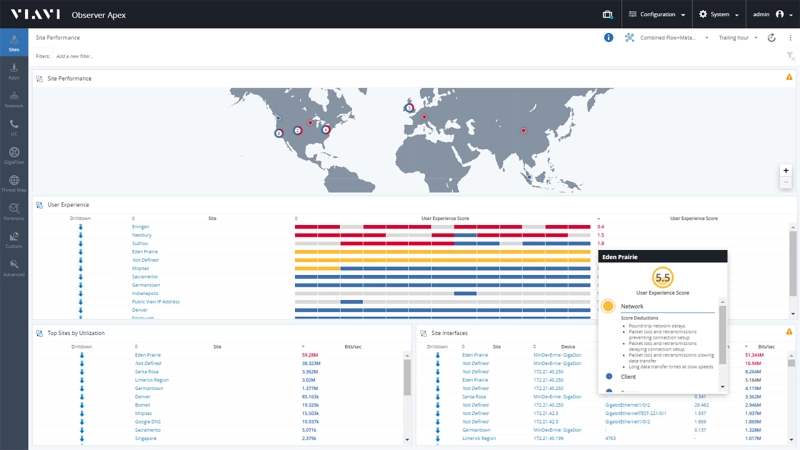
Managing Distributed Networks and Applications
Most manufacturers have a diverse IT infrastructure due to global and dispersed operations. Monitoring across a distributed, hybrid network with a variety of appliances and applications introduces visibility challenges to nearly every IT operations team. Though IT is recognized as providing many competitive advantages, it’s often seen as a cost center, subject to cost-cutting initiatives. One way to impact costs is to consolidate tools based on capabilities, not solution features. With the interdependence of the infrastructure, applications, and security needs – teams need to look at overlapping needs. The days of siloed teams are fading fast and while it is idealistic to expect agreement on one tool, it is reasonable to expect teams to prioritize their challenges, seek improvements in ease-of-use, and find those solutions that deliver actionable KPIs that support efficiency goals.
The Observer platform enables manufacturing organizations to automate and simplify IT Operations in three key areas, supporting efficiency goals and delivery of production-critical applications and services:
- Managing daily network and security processes with a solution that provides full visibility across the IT spectrum and delivers actionable KPIs. This is notable because nearly 50% of all problems are first detected and reported by end-users.
- Mitigating risk from change and unexpected events by providing a common platform for NetOps, DevOps and SecOps to minimize threat exposures while ensuring operational continuity and protections of intellectual property and data.
- The ability to solve performance and security issues faster can have dramatic and positive impact on processes, production, and finances. Leveraging the Observer platform for operational efficiency and ease of use helps organizations better balance daily operations with the need and time to focus on transformative projects.
While there is no one-size-fits-all single solution that provides all monitoring needs, Observer does provide a solution that captures, stores and marries multiple unedited data sources, leverages other solutions in place and delivers insight in easy-to-read, customizable dashboards. This helps network operations filter out the noise, reduce time spent on false positive notifications and allows IT and business leaders to quickly understand the health of their network and applications environment.
To see the Observer platform in action, view our online demos.
资源
Products
-

Observer Apex
Gain Comprehensive Cloud-to-On-Premises Service Visibility with End-User Experience Scoring
-

Observer GigaFlow
More than just flow; user, machine, network and, application data – in a single enriched record
-

Observer GigaStor
Enable end-user experience scoring with the best packet capture, analysis, and storage solution in the industry -...

